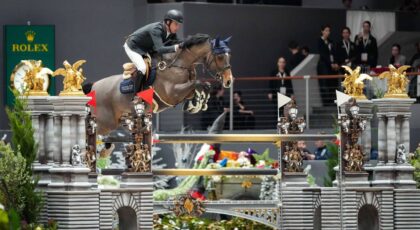“Winning isn’t everything; it’s the only thing.”
Henry Russell Sanders, UCLA Bruins Coach 1950
“Do your best”
Ganbatte (Japanese)
Ever since Commodore Perry’s “black ships”—so-called because they belched black smoke from their coal-fired engines—sailed into Edo, now Tokyo, Bay in 1853 and compelled a secluded Japan to open trade first with the United States, Westerners have been puzzled by seeming differences in cultural attitudes between the Japanese and their Western counterparts.
That difference is no greater expressed than in the difference between Japanese and Western attitudes toward winning. True, Japan emerged as a world military power following its victory in 1905 over Russia in the Japan-Russia War, but Japanese attitudes toward winning in other areas of human endeavor are far more complex.
Form is in many instances more important than outcome to the Japanese. It is more valued for an archer to display perfection in technique than to strike a bullseye with an arrow. At gift-giving time twice a year in Japan, the perfection of the lace pattern on a melon is more prized than even the fruit itself.
And so it is with sports.
It is pointed out in the 1988 PBS Frontline documentary, “American Game, Japanese Rules,” about American baseball players playing for Japanese teams: “The perfect outcome in a Japanese baseball game is a hard-fought tie: no one loses.” Players exhibit ganbatte, they try their best, show toshi, fighting spirit, but do not demean or embarrass their opponent. Everyone wins.
Unknown to many Americans perhaps, the Japanese are huge fans of racing. They crowd racetracks and betting parlors throughout the country, especially near major cities like Tokyo. The country has some of the finest breeding farms and Thoroughbred sires and mares in the world, based primarily on the northern island of Hokkaido.
Japanese racehorse and Japanese racing success has increased near-exponentially, sending competitors to singular Grade One races worldwide, including The Kentucky Derby, the Belmont Stakes, the recent Saudi World Cup and the Dubai World Cup, won by Japan’s Victoire Pisa in 2011 in the wake of the Fukushima disaster, with fellow Japan runner Transcend second.
But, while Japan is enjoying its new success in racing, it was not always nor need not always be that way.
The idea that effort is greater than outcome extends to horseracing. There is no finer example of this than the near-mythical story of Haru Urara, a bay mare whose name means “Glorious Spring,” but whose racing career was anything but glorious.

Haru Urara was foaled in 1996. She was sired by Nippo Teio, a highly successful racehorse whose wins included Tokyo’s turf Yasuda Kinen, and whose dam was ironically named Heroine. Her great-great-great grandsire was Canada’s famed Northern Dancer, considered the foundational sire of North American Thoroughbred racehorses.
Breeder and owner Nobuto Bokulo tried to auction the foal and was surprisingly unsuccessful. So, with seemingly wonderful racing bloodlines, he trained her to race.
She started her racing career with a fifth—and last—place finish on Nov. 17, 1998 at Kochi Racetrack on the Japanese island of Shikoku.
Of course, it is not unusual for a new racehorse to finish poorly in a first outing. What followed, however, was definitely unusual.
An iron horse, Haru Urara raced as often as twice a month over the next four and a half years—and never won a single race.
By 2003, her losing record totaled 80 and that is when her story was picked up by media in Japan and ultimately around the world. Soon after, Japan’s lovable loser would convert her persistent failure to win into her greatest contribution to Japanese racing.

There are 25 racetracks in Japan, a nation of 127 million people. The “big four” are near the big cities: Tokyo, Kyoto, Nakayama and Hansin near Osaka. There are 75 racetracks in the U.S., with a population not quite three times that number. Not surprisingly, both countries have a similar problem—too many race tracks, particularly “minor” ones. Kochi, where Haru Urara most often raced, was one of those minor Japanese tracks.
Still, the media picked up this story of the horse who raced in a “Hello Kitty” facemask that seemed to befit her status, one that came to be known as: “the shining star of losers everywhere”—makegumi no hoshi in Japanese.

People respected the fact that, while she never won, she ran with all her heart. The “Haru Urara Boom” as it came to be known touched even the most unrelated areas of Japanese life. Bettors would use their losing tickets as omamori, similar to the charms purchased at Shinto shrines to provide protection against bad luck.
Her story reached even into the highest levels of Japanese governance when then-Prime Minister Junichiro Koizumi told CBS News, which now was following the story: “I’d like to see Haru Urara win, even just once. The horse is a good example of not giving up in the face of defeat.”
Of toshi, of fighting spirit.
People would place the losing tickets in the windshields of their cars to avoid car crashes because, in Japanese, the word ataranai can mean both “lose a bet” or “protect from being struck.” The idea even caught on with the Kochi Prefecture Racing Association, which would stamp the word on tickets bet on her.
While it may have protected automobile drivers, the good luck never transferred to Haru Urara, whose incredible losing streak continued unbroken into 2004. It was about the same time that the struggling Kochi Racetrack faced grave financial distress.

That’s when “the shining star of losers everywhere” would provide a win—perhaps not for herself—but certainly for the cash-strapped Kochi Racetrack.
On March 22, 2004, 13,000 crazed Haru Urara fans crammed into the Kochi Racetrack, several thousand of whom had waited outside forcing the track to open early. A huge number of fans waited hours in line to purchase a special Haru Urara Commemorative Ticket at the booth that had been opened for just that day.
On that one day, bettors placed a total of 121,751,200 yen or $1,138,180 in 2004 dollars on Haru Urara to win. It seemed a reasonable chance given the 1.8-1 odds and the fact Japan’s top jockey, Yutaka Take, would ride her this one day. At the time, he had over 3,000 winners and had won the Japanese Derby three times.
For the track, however, a win could have been a financial disaster.
It would be easy to tell how it all ends, easier still for anyone to look online. Instead, why not just take the next 20 minutes and cheer on Haru Urara in: The Shining Star of Losers Everywhere, which premiered at Sundance and was recently shown to great popular acclaim at the 2019 EQUUS Film Festival:
Her story generated a mini-merchandise-industry of tee-shirts, plush toys and other memorabilia still popular among Japanese racing enthusiasts.


Never officially retired, she eventually found her way to a farm in Chiba Prefecture after a career during which she won only $10,500, but also the love of an entire nation.




 March 27, 2020
March 27, 2020 




























